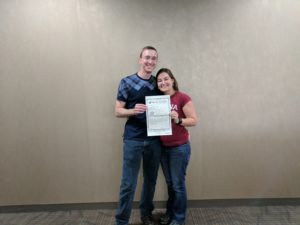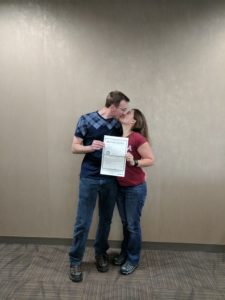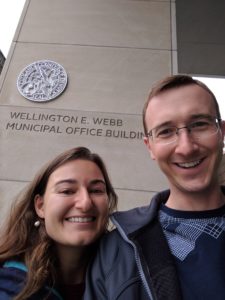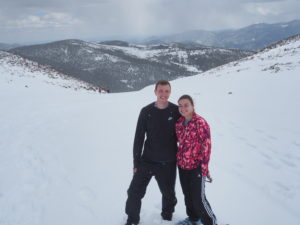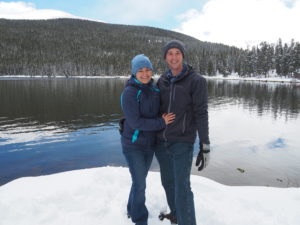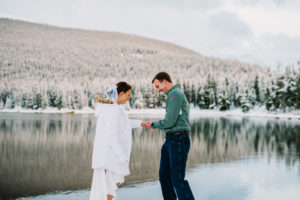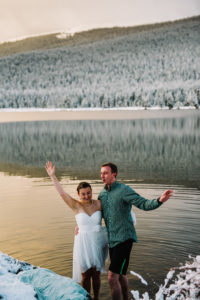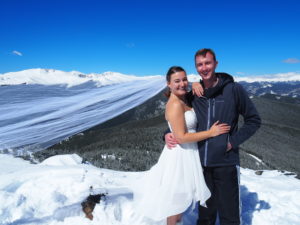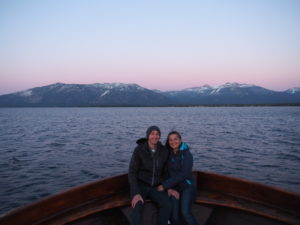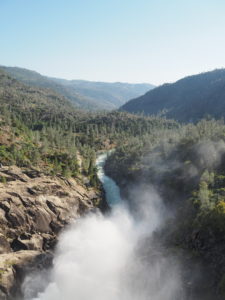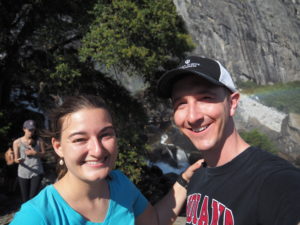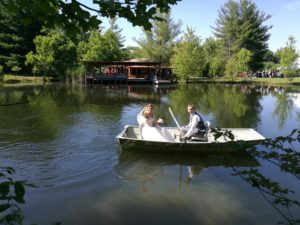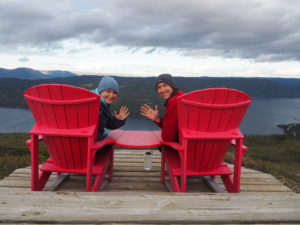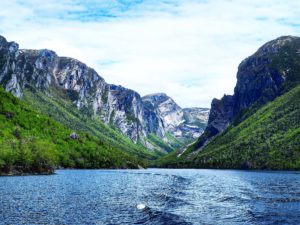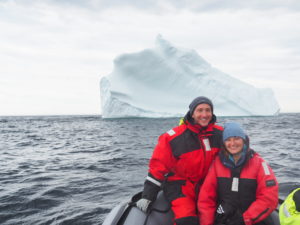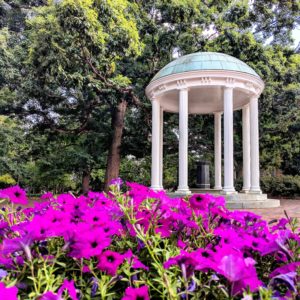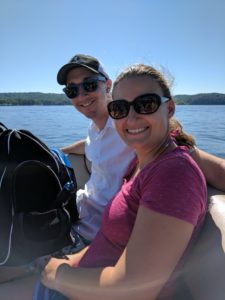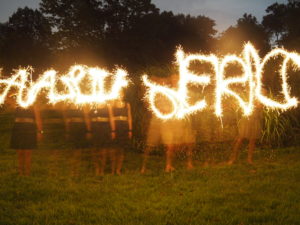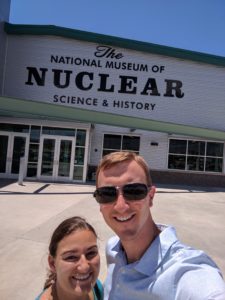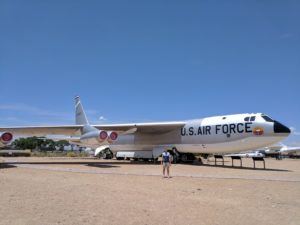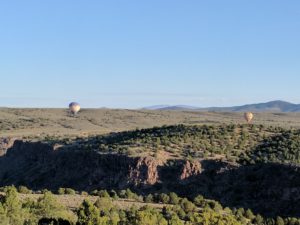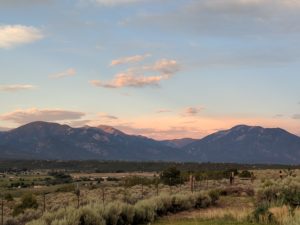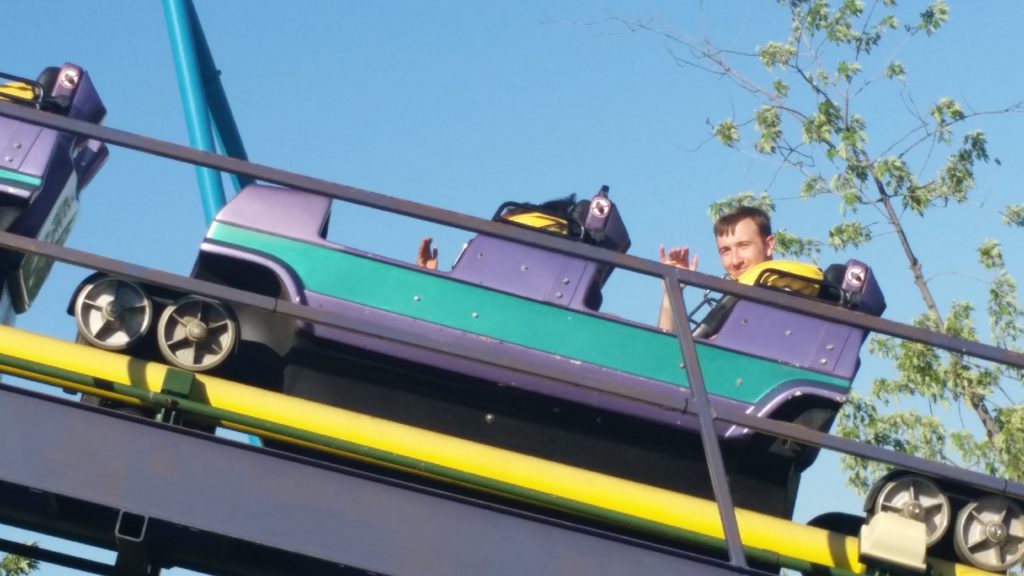My paper “Linking Delay Announcements, Abandonment, and Staffing: A Behavioral Perspective” has been named a finalist for the Service Science Best Student Paper Award. I will present the paper in a special finalist section on Sunday of INFORMS 2017.
Category Archives: Personal Updates
Eric, where have you been?!?
So, it’s been over two months since I got married and a month and a half since I got married again. Since early May, I haven’t been in one place for more than three weeks. I guess it’s time to recap the journey so far.
Early May: I formally proposed my dissertation topic. My thoughts then moved quickly to our upcoming nuptials.
May 19: Maria and I flew to Denver. We picked up our marriage license!
The building for the marriage license was Webb Municipal Office Building; good sign, right?
Right before we got to Denver, they got a bunch of snow. So our 4 days there involved lots of snowy adventures. We hiked a glacier.
We scouted out a site for our marriage ceremony.
And we got married! We held a small ceremony at Echo Lake near the trailhead for Mt. Evans. Initially, we were hoping to get married ON Mt. Evans, because it was initially named Mt. Rosalie, who was Albert Bierstadt’s wife, and we got engaged on Mt. Bierstadt. However, the snowfall prior to our arrival made that impractical.
Our ceremony was Monday, May 22, 2017 (exactly 7 years after we officially started dating and exactly 3 years after we got engaged). We held a sunrise ceremony around 5:30am mountain time and were officially married before 6:00am.
And then we got into the freezing cold Echo Lake!
And then we climbed Chief Mountain, an 11709′ peak. Maria did it in her wedding dress. Proof at the top:
May 23: We said goodbye to the handful of friends that were with us in Denver and headed on our first honeymoon. We flew into Reno, NV. We toured the Nevada capitol in Carson City and headed to our destination: Lake Tahoe.
In Tahoe, we spent 2 nights on the north shore and 2 nights on the south shore. We went on a chilly boat tour.
We went paddle boarding.
May 27: We drove down to Yosemite National Park. Yosemite was having spectacular waterfall displays after record snowfall. We first went to Hetch Hetchy, which has spectacular views that rival Yosemite Valley, while being much less trafficked. Here is a view from the dam there.
Later, we tried to do the Valley Loop Trail, but were stymied by excessive water runoff causing new rivers across the trail.
We ended up fording at least 2 rivers (we lost all our oxen) and walking about 17 miles. On future days, we climbed up to see Yosemite Falls:
On the way out of California, we stopped to tour the capitol in Sacramento.
May 31: We flew back to Indiana over night. Southwest lost one of our four bags. We began 2nd wedding ceremony plans in full earnest. This ceremony had been occupying us since around November, but now was crunch time. We were expecting around 200-230 guests at an outdoor venue near Bloomington on June 10.
June 9: We had a rehearsal dinner at Irish Lion, by invitation, and then drinks at the downstairs area of The Tap, open to all. We filled that room at The Tap and had a bit too much fun.
June 10: We got married! Again! This time in front of a lot more people. We got married at Solsberry Hill in Solsberry, Indiana around 4:30pm on Saturday, June 10, 2017. We’re still awaiting pictures from our photographer, but here is a picture from one of my friend’s cameras. It showcases our escape from the wedding amphitheater via escape rowboat.
The ceremony and reception were awesome. We had cookie cake, music (hand chosen by yours truly), s’mores, cornhole, and lots of fun interactions. Thanks to everyone who made it out. I know most people were gone by then, but about 30 hangers-on got to see me jump in the lake in my formal attire around 11pm.
June 11: We really wanted a wedding weekend, not just a wedding, so we kept the party going on Sunday. We had brunch at the Indiana Memorial Union with friends and family. Then we rented a double-decker boat (with a slide) at Lake Monroe and spent the day cruising and swimming. Weather was great and everyone seemed to have a good time. Group photo:
June 12: We left for our second honeymoon. This time, we went to Newfoundland, Canada! This was the perfect time of year to see icebergs, whales, and puffins. We succeeded at seeing 2 of the 3. After landing in St. John’s early on the 13th (after 2 transfers), we saw the sunrise at the easternmost point of the continent. At the first couple cities we visited, we were not able to take iceberg tours, because there was so much ice in the harbors that boats could not get out. We visited Gros Morne (Canadian) National Park, which has some awesome scenery. Here is us at the top of one of the hikes:
We also saw a couple really cool geological sites. And we took a boat tour into a freshwater fjord (very rare):
On the way back toward St. John’s to fly out, we stopped one night in Trinity. We were able to take a boat tour to get close to icebergs there:
We also ended up parking that boat in the middle of a group of 4-6 humpback whales, which kept surfacing. One even jumped out of the water (breached), landing with a big splash. We didn’t get a picture of that because it was too fast, but it was very close to us, probably 100-200 feet.
June 18: We overcame the inefficient Toronto airport to fly to Chapel Hill, NC. I attended the annual MSOM conference, one of my main academic conferences. It was back on UNC’s campus, where Maria and I first lived together, back in 2011. Maria got to tour around town while I attended the conference and presented my paper.
June 21: Back to Bloomington. Things settled down briefly while we recovered and tried to put our house back into order.
July 2: Took another boat tour of Lake Monroe with friends again. Got sunburned.
July 4: Hosted a 4th of July party with friends. Lots of grilling out, cornhole, and sparklers.
July 8: Left for a month in southwest US. Maria and I decided to spend some significant time away from Bloomington over the summer to explore a new area. We saw a St. Louis Cardinal’s game (bleh!) on the way toward Oklahoma City the first night. We toured the Oklahoma capitol. Then we headed to New Mexico. We had booked an Airbnb in Algodones for a week, but it had multiple issues. So we scrambled and found a place in Albuquerque. On the way there, we toured the National Museum of Nuclear Science and History.
In Albuquerque, I sequestered myself inside to work on my many neglected papers, and Maria toured the town. On July 17, we headed toward Taos, where our second Airbnb was. On the way, we toured the New Mexico capitol in Santa Fe. We will be here until July 31. Here is our view every morning:
I continue to work on my projects while Maria gets to do infinite fun things. I’m trying to get everything together for the academic job market this Fall, and I need to make up for lost time earlier in the year. I’ll be pretty busy for the rest of this year. Here the rest of our travel schedule:
July 31: Staying with Bryan Wallace, one of my groomsmen and high school friend, in Denver
August 1: Staying with Kyle Bradley, who just graduated from IU and took a job at Kansas State, and family in Manhattan, KS
Aug 2-5: Staying with Tim Pennings, friend and former internship advisor, in Au Train, MI. Upper peninsula.
Aug 5-7: Staying with my mom in Sandusky, OH.
Then back to Bloomington. Over 3 months (mid-May to mid-August), we will have slept in 9 states and 1 province, visited attractions in 2 other states, driven through 4 other states, and spent too long in Toronto’s airport. I hope you’re enjoying your summer as well!
Successfully Passed Proposal Defense
A week ago, I passed my dissertation proposal defense. I proposed two essays in energy operations management for my dissertation. I will have to defend the thesis writeup next spring. Thanks to my committee: Owen Wu, Gil Souza, Kyle Cattani, and Kurt Bretthauer, and to the external members of my examination committee: John Maxwell and Shibo Li.
Finalist for POMS College of Sustainable Operations Best Student Paper
Kyle Cattani, one of my co-authors, was left off the original announcement. I have added him below.
Announcement sent out via Tim Kraft and Yannis Bellos:
On behalf of the awards committee, we are pleased to congratulate the finalist for the 2017 POMS College of Sustainable Operations Best Student Paper Competition. The finalist in alphabetical order are:
Karthik Balasubramanian (Harvard Business School)
Inventory Models for Mobile Money Agents in the Developing World
Co-author: David DrakeEric Webb (Indiana University)
Mind the Gap: Coordinating Energy Efficiency and Demand Response
Coauthor: Owen Wu, Kyle CattaniCan Zhang (Georgia Tech)
Truth-inducing Mechanisms for Medical Surplus Product Allocation
Coauthors: Atalay Atasu, Turgay Ayer, Beril ToktayThe winning paper will be announced during the College of Sustainable Operations business meeting on Saturday, May 6th at this year’s POMS Annual Conference in Seattle. Thank you to all those who submitted. We had a record number of entries this year with 24 submissions, all of which were of high quality.
Research Page Updated
I’ve deleted my old “Projects” page and created a “Research” page which contains my current and past research projects. The page is split into topics of research:
-Energy, my primary research area
-Behavioral, my secondary research area
-Sports, my fun research area
-Other, including any one-off projects
-Old Projects, from undergraduate and Master’s years or from internships
Talks I Attended at INFORMS 2016
Documented mostly for my future reference.
Sunday 8am, track SA36:
-An Empirical Investigation of Network Effects in Automobile Sales by Tianjun Feng, Fuqiuang Zhang, and Peiwen Yu
-The Operational Value of Social Media Information by Dennis Zhang, Antonio Moreno-Garcia, Ruomeng Cui, and Santiago Gallino
-When you work with a super man, will you also fly? An empirical study of the impact of coworkers on performance by Serguei Netessine and Fangyun Tang
-CEO overconfidence and inventory management by Fuqiang Zhang, Tianjun Feng, and Qing Zhang
Sunday Plenary: Cognitive Computing: From Breakthroughs in the lab to applications in the field by Guru Banavar of IBM Research
Sunday 11am, track SB09:
-Biomass Supply contract pricing and environmental policy analysis: an agent-based modeling approach by Shiyang Huang and Guiping Hu
-On the effectiveness of tax incentives to support biomass co-firing by Hadi Karimi and Sandra Eksioglu
-A game-theoretic model of biomass co-firing policies by Sandra Eksioglu and Armin Khademi
-Evaluation of a wind farm project by Metin Cakanyildirim
Sunday 1:30pm, track SC28:
-Dynamic optimization of multichannel advertising campaigns in an online advertising supply chain by Changseung Yoo, Anitesh Barua, and Genaro Gutierrez
-Variability in labor schedules: Effects on store performance and employee turnover by Hyun Seok Lee, Saravanan Kesavan, and Camelia Kuhnen
Sunday 1:30pm, track SC30
-Managerial Attention, Reminders, and the Energy Efficiency Gap by Enno Siemsen and Suvrat Dhanokar
-Does learning from inspections affect environmental performance? Evidence from unconventional oil and gas wells by Suresh Muthulingam and Vidya Mani
Sunday 4:30pm, track SD29:
-Valuing distributed energy resources in electricity system planning: locational benefits and economies of unit scale by Jesse Jenkins
-Combined heat and power production – valuing flexible operation in an uncertain environment by Chritoph Weber
Sunday 4:30pm, track SD28
-Robust Supply function equilibrium in renewable energy markets by Yuanzhang Xiao, Chaithanya Bandi, and Ermin Wei
-An analysis of demand response programs in the wholesale electricity market by Asligul Serasu Duran, Baris Ata, and Ozge Islegen
Monday 8am, track MA35:
-The use of technology to improve engagement through accountability by Gad Allon
-Innovations in teaching operations management at UCLA by Guillaume Roels
-Architecting new business models (in the classroom) by Karan Girotra
-Ideo: Human-centered service design – multimedia-enhanced teaching and learning by Ryan Buell
Monday Plenary: Public health preparedness: Answering (largely unanswerable) questions iwth operations research by Margaret Brandeau
Monday 1:30pm, track MC29:
-Operational response to climate change: Do profitable carbon abatement opportunities decrease over time? by Christian Blanco, Felipe Caro, and Charles Corbett
-Closing a supplier’s energy efficiency gap: The role of assessment assistance and procurement commitment by Quang Dang Nguyen, Karen Donohue, and Mili Mehrotra
-Mind the Gap: Coordinating Energy Efficiency and Demand Response by Eric Webb, Owen Wu, and Kyle Cattani
Tuesday 8am, track TA29:
-Energy efficiency contracting in supply chains under asymmetric bargaining power by Ali Shantia, Sam Aflaki, and Andrea Masini
-An analysis of time-based pricing in electricity supply chains by Asligul Serasu Duran, Baris Ata, and Ozge Islegen
-Investments in renewable and conventional energy: The role of operational flexibility by Kevin Shang, Gurhan Kok, and Safak Yucel
-Explaining the variation in progress in the US nuclear industry by Christian Blanco, Felipe Caro, and Charles Corbett
Tuesday 11am, track TB29:
-Green sourcing – the role of premium sharing and consulting services by Xi Chen
-Inducing prompt disclosure in the presence of evasive effort by Shouqiang Wang, Peng Sun, and Francis De Vericourt
-The adoption of smart home appliance form energy shifting by Wenbin Wang and Yannan Jin
-Incentives for joint product and process improvement under collective extended producer responsibility by Luyi Gui
Tuesday 1:30pm, track TC34:
-Do mandatory overtime laws improve quality? Staffing decisions and operational flexibility of nursing homes by Lauren Lu and Susan Lu
-Predicting Nurse Turnover And Its Impact on Staffing Decisions by Eric Webb and Kurt Bretthauer
-Hospital readmissions reduction program: An economic and operational analysis by Dennis Zhang
Tuesday Keynote: Optimizing the future – supply chain at Amazon by Jason Murray
Tuesday 4:30pm, track TD37:
-The impact of carbon pricing on improving supply chain energy efficiency by Quang Dang Nguyen, Karen Donohue, and Mili Mehrotra
-Quantifying the impact of intermittent renewable generation on German electricity market by Shadi Goodarzi, Derek Bunn, and Syed Basher
-Designing hydro supply chains for water, food, energy, and flood nexus by Kwon Gi Mun, Raza Ali Rafique, and Yao Zhao
-Reversing the death spiral: A new business model for utility firms under social network effects by Safak Yucel, Gurhan Kok, and Kevin Shang
Wednesday Keynote: The goals of analysis are understanding, decisions, and influencing policy by Gerald Brown
Wednesday 11am, track WB31:
-Ethics, Bounded Rationality, and IP sharing in knowledge-based outsourcing by Manu Goyal and Krishnan Anand
-Accurate estimation of retail store traffic from people counters to achieve better conversion by Anup Hanamant
-Mitigating digital discrimination with reviews in the sharing economy: Field evidence from Airbnb by Dennis Zhang, Jun Li, and Ruomeng Cui
-Impact of operational risks in financial organizations by Yuqian Xu, Fangyun Tan, and Sergeuei Netessine
Wednesday 12:45pm, track WC31:
-Rational abandonment from observable priority queues by Philipp Afeche and Vahid Sarhangian
-Design of discretionary service lines: An operational driver of variety by Laurens Debo and Cuihong Li
-Linking Customer Behavior and Delay Announcements: Are Customers Really Rational? by Eric Webb, Qiuping Yu, and Kurt Bretthauer
Wednesday 2:45pm, track WD27:
-The effect of discrete workshifts on non-terminating queues by Robert Batt, Diwas KC, Bradley Staats, and Brian Patterson
-A near-term mortality indicator for terminal cancer patients using high frequency medical data by Donald Lee and Edieal Pinker
-A machine learning approach for personalized health care outcome analysis by Guihua Wang, Jun Li, and Wallace Hopp
-Are patients patient? The effect of universal healthcare on emergency department visits by Diwas KC
Wednesday 4:30pm, track WE32:
-An analysis of world baseball softball confederation premier 12 schedule by Seong Kim and JC Kim
-The role of offensive system in the NBA draft by Ryan Chen, Eli Shayer, Travis Chen, and Nicholas Canova
-Using Past Scores and Regularization to Create a Winning NFL Betting Model by Eric Webb and Wayne Winston
-An optimal pacing strategy for ultramarathons by Kristoper Pruitt and Justin Hill
INFORMS 2016 Presentations
Come show me some love in Nashville. Here are my presentations:
1. Session MC29 – Issues in Energy Efficiency and Renewable Energy
November 14, 2016, 1:30 – 3:00 PM, 202A-MCC
3rd Presentation (of 3): Mind The Gap: Coordinating Energy Efficiency And Demand Response
Authors: Eric Webb, Owen Wu, Kyle D. Cattani, Kelley School of Business, Indiana University
Abstract: Traditionally, energy demand-side management techniques, such as energy efficiency (EE) and demand response (DR), are evaluated in isolation. We examine the interactions between long-term EE upgrades and daily DR participation at an industrial firm. We find that EE and DR act as substitutes in terms of reduction of peak electricity demand, and the long-studied energy efficiency gap between firm-optimal and societal-optimal levels of EE is smaller when DR is considered. We suggest three approaches to reducing the energy efficiency gap, including an original suggestion that relies upon the interactions between EE and DR.
2. Session TC34 – Public Policy and Healthcare Operations
November 15, 2016, 1:30 – 3:00 PM, 204-MCC
2nd Presentation (of 3): Predicting Nurse Turnover And Its Impact On Staffing Decisions
Authors: Eric Webb, Kurt Bretthauer, Kelley School of Business, Indiana University
Abstract: Nurse turnover remains a significant problem in skilled nursing facilities across the United States. High turnover leads to two important questions: (1) Hiring decisions – What applicant attributes should be valued when hiring nurses, in order to hire nurses that are effective at their jobs and likely to stay for a long duration? (2) Staffing decisions – How should nurse workload be managed in order to prevent burnout and decrease turnover? Based on a large dataset from skilled nursing facilities in the United States, we first use a survival model to predict nurse turnover. For this talk we then focus on staffing and incorporate these empirical results into analytical models for nurse staffing decisions.
3. Session WC31 – Consumer Behavior in Services
November 16, 2016, 12:45 – 2:15 PM, 202C-MCC
4th Presentation (of 4): Linking Customer Behavior And Delay Announcements: Are Customers Really Rational?
Authors: Eric Webb, Qiuping Yu, Kurt M. Bretthauer, Kelley School of Business, Indiana University
Abstract: We empirically explore customer abandonment behavior in the presence of delay information using data from a call center. Previous work has assumed that customers are at least partially rational in responding to announcements. In contrast, we relax all rationality assumptions. Our findings indicate that customers exhibit loss aversion behavior. In addition, customers may update their announcement-induced reference point as they hear subsequent announcements. Our results also indicate that customers may fall for the sunk cost fallacy while waiting in the queue. We show the impact of these effects on staffing decisions using a classic staffing model.
4. Session WE32 – Sports and Entertainment
November 16, 2016, 4:30 – 6:00 PM, 203A-MCC
3rd Presentation (of 4): Using Past Scores And Regularization To Create A Winning NFL Betting Model
Authors: Eric Webb, Kelley School of Business, Indiana University, and Wayne L. Winston, Bauer College of Business, University of Houston
Abstract: Is the National Football League betting market efficient? We have devised a profitable betting model that would win 52.7% of the 7,705 bets against the spread it would have made over 34 seasons. Scores from previous weeks are used to estimate the point value of each team’s offense and defense. These values predict next week’s scores, and a bet is placed against the advertised spread. The sum of squares of offensive/defensive point values are constrained to be less than a regularization constant.
Sports Open Houses Calendar Populated
Calendar of games open to friends and colleagues at my house, recently updated for September-December. Let me know if you want to see something added and I’ll try to accommodate.
INFORMS 2016 Presentations
Nov. 14, 2016, 1:30 – 3:00 PM
Mind The Gap: Coordinating Energy Efficiency And Demand Response
Eric Webb, Owen Wu, Kyle D. Cattani, Kelley School of Business, Indiana University, Bloomington, IN
Nov. 15, 2016, 1:30 – 3:00 PM
Predicting Nurse Turnover And Its Impact On Staffing Decisions
Eric Webb, Kurt Bretthauer, Kelley School of Business, Indiana University, Bloomington, IN
Nov. 16, 2016, 12:45 – 2:15 PM
Linking Customer Behavior And Delay Announcements: Are Customers Really Rational?
Eric Webb, Qiuping Yu, Kurt M. Bretthauer, Kelley School of Business, Indiana University, Bloomington, IN
Nov. 16, 2016, 4:30 – 6:00 PM
Using Past Scores And Regularization To Create A Winning Nfl Betting Model
Eric Webb1, Wayne L. Winston2, 1Kelley School of Business, Indiana University, Bloomington, IN, 2Bauer College of Business, University of Houston, Houston, TX
Amusement Park Rankings
Here is a summary of the roller coaster parks we visited on our crazy road trip:
We visited Michigan’s Adventure, in Muskegon, MI, on Sunday, July 17. We rode 6 roller coasters and 0 other rides. In descending order, my coaster ratings were 6, 5, 4, 2, 2, and 1 out of 10.
We visited Canada’s Wonderland, in Vaughan, ON, on Monday, July 18. We rode 11 roller coasters and 2 other rides. In descending order, my coaster ratings were 9, 8, 6, 5, 4, 4, 4, 4, 3, 2, and 2. My ratings for other rides were 7 and 6.
We visited Hersheypark, in Hershey, PA, on Tuesday, July 19. We rode 9 roller coasters and 2 other rides. In descending order, my coaster ratings were 9.5, 8, 8, 8, 7, 7, 6, 5, and 2. My ratings for other rides were 5 and 3.
We visited Dorney Park, in Allentown, PA, on Wednesday, July 20. We rode 6 roller coasters and 4 other rides. In descending order, my coaster ratings were 7, 6, 6, 6, 5, and 3. My ratings for other rides were 6, 3, 3, and 2.
We visited Cedar Point, in Sandusky, OH, on Monday, July 25. We rode 12 roller coasters and 3 other rides. In descending order, my coaster ratings were 10, 10, 9, 8, 7.5, 7, 7, 5, 5, 5, 4, and 3. My ratings for other rides were 4, 4, and 2.
44 coasters in 9 days. Whew.
It is safe to say that Cedar Point reigns supreme among the other amusement parks. Hersheypark was a pleasant surprise though. Here are the final park rankings:
1. Cedar Point, with 7 coasters scoring 7 or higher out of 10.
2. Hersheypark, with 6 coasters scoring 7 or higher.
3. Canada’s Wonderland, with 2 coasters scoring 7 or higher.
4. Dorney Park, with 1 coaster scoring 7 or higher.
5. Michigan’s Adventure, with 0 coasters scoring 7 or higher.
Including other parks I have been to in the last 10 years, I think the rankings would be something like this (weighting roller coasters most heavily):
1. Cedar Point
2. Six Flags Magic Mountain
3. Hersheypark
4. Kings Island
5. Kings Dominion
6. Canada’s Wonderland
7A. Dollywood
7B. Holiday World
9. Dorney Park
10. Michigan’s Adventure
